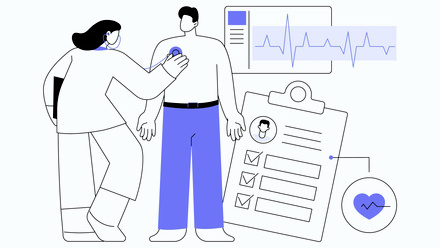5 key trends in the health and protection market and what they mean for employers
Though the event was under Chatham House rules, the REBA content team has collected some of the emerging trends highlighted by delegates, panellists and workshops.
Employers are seeking a more joined-up approach to prevent overlap
In a bid to ensure employees receive the best care, employers have different forms of health and protection cover, but this is often leading to an overlap of services, particularly where ‘add-on’ benefits such as EAPs and digital GPs are offered.
This could mean, for example, one employer has three different digital GP services, creating confusion for employees and employers on where to go to for advice and support.
Employers therefore want to streamline their offering to ensure the most effective benefit is offered to employees, while simultaneously keeping costs down.
A key way to achieve this is by getting your health and protection providers and brokers to work together to find an optimal solution for your organisation.
There’s growing scepticism over the effectiveness of digital offerings
Throughout the pandemic, healthcare relied heavily on its digital offering such as virtual GPs to ensure employees could still access vital services.
The service means employees can benefit from early intervention following long NHS waiting times for GP appointments.
However, four years on from the start of the first lockdown in the UK, there was a growing scepticism of how effective digital healthcare services are.
A lack of face-to-face interaction could mean employees are not being treated effectively, with some sent for unnecessary tests or given referrals to expensive private clinics, heightening employees’ anxiety about their health.
These situations may have been avoided in a face-to-face environment.
Digital offerings are still, and will continue, to be an essential component of health and wellbeing strategies, but many are considering how these can be used in a complementary way alongside in-person interventions and services.
Employers are grappling with increasing costs of insurance
Employers can expect to see their insurance costs double within a few years due to high medical inflation globally.
REBA’s pre-event research found 44% of attendees are currently reviewing their health and protection strategy, with 42% expected to review in the next 18 months, demonstrating the level of change expected in the market in the months ahead.
Yet despite concerns around cost, delegate employers were still keen to ensure health and protection benefits design is tailored to the needs of their organisation and not driven by cost alone.
What constitutes health and protection value is changing
Linked to the increases in the cost of health and protection benefits is the definition of ‘value’.
How employers choose to measure the success of their benefits has long been up for debate – whether it’s return on investment, number of claims or reduced absence – and this has become more acute with rising cost pressures.
Yet the overwhelming message from panellists and attendees is the need for value to be defined by the organisation and understanding its priorities and goals.
Technology and improved data will help with this aim, but ultimately there is a much bigger focus on outcomes, the value of the investment and reducing risk.
As one panellist noted – employers should fear the cost of not acting on health risks.
Prevention needs to be prioritised
Given the rising health risks affecting the working population – from ageing to more instances of chronic conditions, prevention will be paramount.
In particular, encouraging younger employees to support their healthy habits for a healthier workforce in the future.
Yvonne Braun, director of policy, health and protection at Association of British Insurers (ABI), also championed the use of health and protection insurance to support employee health, boost productivity and the economy.
To better support employers to introduce these benefits, the ABI is continuing to lobby government to cut the rate of Insurance Premium Tax (IPT) on health insurance to help widen access for employers and individuals, and help boost workplace health.
It’s Futureproofing Workplace Health research also made several recommendations to enable more people to benefit from health and protection insurance.
These included reforming Statutory Sick Pay and reforming the interaction between social security benefits and insurance to mandate firms disclose information on how they support health and wellbeing.
Throughout the Future of Workplace Health and Protection Summit it was clear that health and protection benefits are essential in helping people to return to work and government should look to the private sector learn lessons on how to help reduce the number of people on long-term sickness absence.







